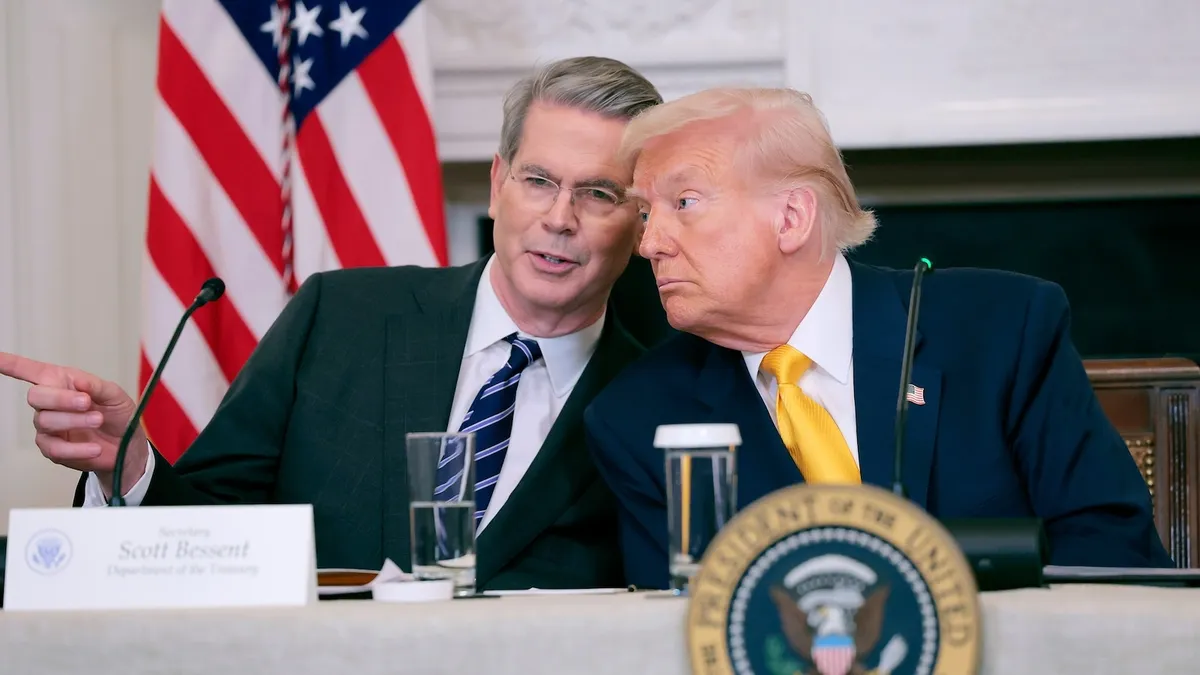
This week, the steep tariffs implemented by President Donald Trump have entered a state of legal limbo, creating significant uncertainty around one of the cornerstone policies of his administration. Experts suggest that while the Trump administration may still prevail in ongoing court battles regarding these tariffs, the complete revival of this policy is now fraught with challenges. Two separate federal courts have invalidated extensive levies imposed on numerous countries, which had been announced during a Rose Garden ceremony that Trump referred to as "Liberation Day."
The rulings from the U.S. Court of International Trade and the U.S. District Court in Washington, D.C. have significant implications. They not only annulled the far-reaching tariffs but also specifically targeted the 30% tariffs on China and a baseline 10% levy that affected nearly all imports. In a twist, a federal appeals court temporarily reinstated these tariffs on Thursday afternoon, allowing them to remain in place while judges assess the legal justifications underlying the tariffs.
The recent court decisions have ignited a legal confrontation over the tariffs that could extend for more than a year, potentially reaching the Supreme Court. This uncertainty stems from the courts' challenges to Trump's use of the International Economic Emergency Powers Act as a legal basis for these tariffs. This 1977 law permits the president to halt transactions with foreign adversaries but does not explicitly authorize tariffs, placing Trump in uncharted legal waters.
Alan Wolff, a former deputy director-general of the World Trade Organization, remarked on the historical significance of these rulings, stating that they represent a considerable setback for the White House. Although the temporary reinstatement of the tariffs allows the policy to persist during legal deliberations, it does not clarify how the judges will ultimately rule on the case.
In a recent social media post, Trump criticized the judges at the U.S. Court of International Trade and defended his tariff policy. He questioned the motives of the judges, suggesting that their decisions could stem from a bias against him. Additionally, Trump claimed that his strategic use of tariffs has resulted in trillions of dollars flowing into the U.S. economy, which he believes would not have occurred without these measures. As of Wednesday, U.S. tariffs have generated approximately $68 billion in revenue this year, although only a fraction of this amount is associated with the tariffs currently under judicial review.
The course of this legal battle may hinge on the outcomes from the two appeals courts involved in the Trump administration's challenges. Patrick Childress, a former trade official, noted that conflicting rulings from the appellate courts would likely prolong the case and escalate it to the Supreme Court. Conversely, similar rulings from both courts could lead to a quicker resolution.
If the courts ultimately rule against Trump's tariffs, the administration might consider other legal avenues to reinstate some levies. For instance, Section 301 of the Trade Act of 1974 allows the executive branch to impose temporary tariffs in response to adverse trade policies from other nations. This section was previously used by Trump to impose tariffs on a variety of Chinese goods and has potential applicability for tariffs against Mexico, Canada, and China regarding their roles in the fentanyl trade.
However, invoking Section 301 broadly would necessitate time-intensive investigations by federal agencies, complicating the process. Additionally, the Trump administration is reportedly assessing another provision of the Trade Act, which could allow for country-specific tariffs of up to 15% for a limited duration.
Importers who have already paid the challenged tariffs may be entitled to government refunds should the legal challenges succeed. Experts indicate that companies could expect to receive refunds, potentially amounting to substantial sums. However, the federal government may delay refund disbursements until the legal disputes are resolved, which could take one to two years. To secure these refunds, companies will need to submit detailed information about their imports, including shipment dates and points of entry into the U.S.
The future of Trump's tariffs remains uncertain as legal battles unfold. With the stakes high and potential implications for the U.S. economy, all eyes will be on the courts as they navigate this complex legal landscape. Whether through reinstatement or alternative legal mechanisms, the administration is exploring every avenue to maintain its economic policies amidst ongoing challenges.